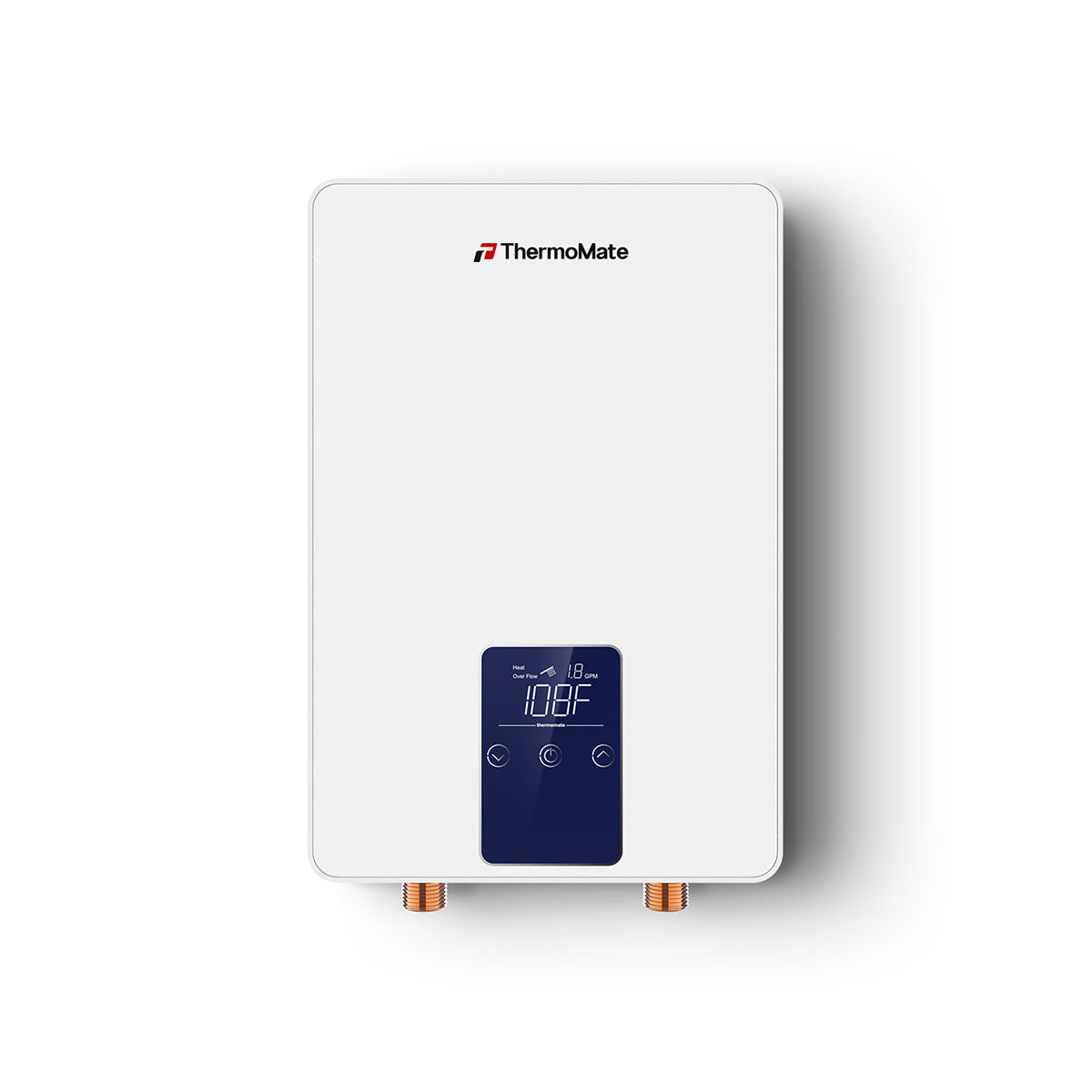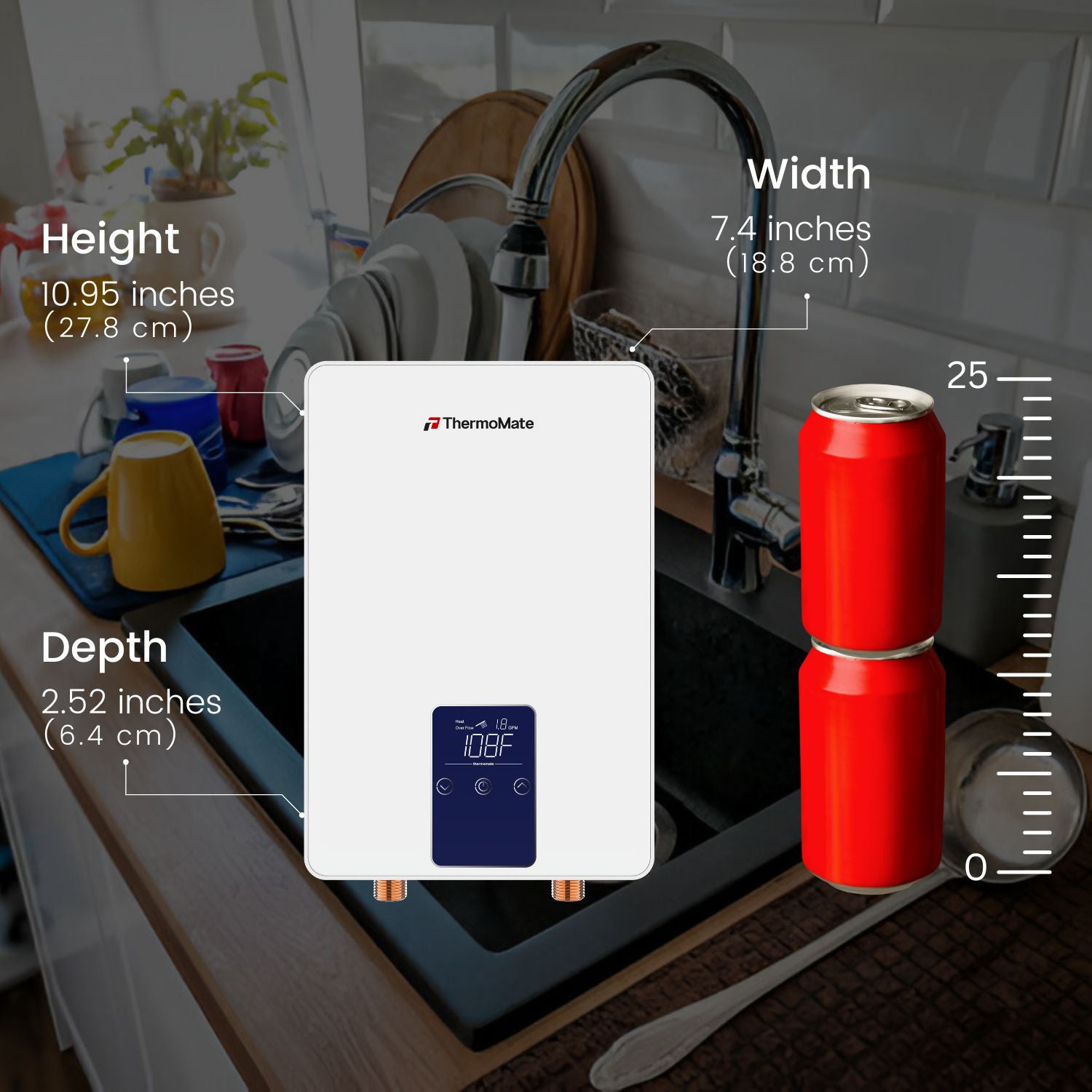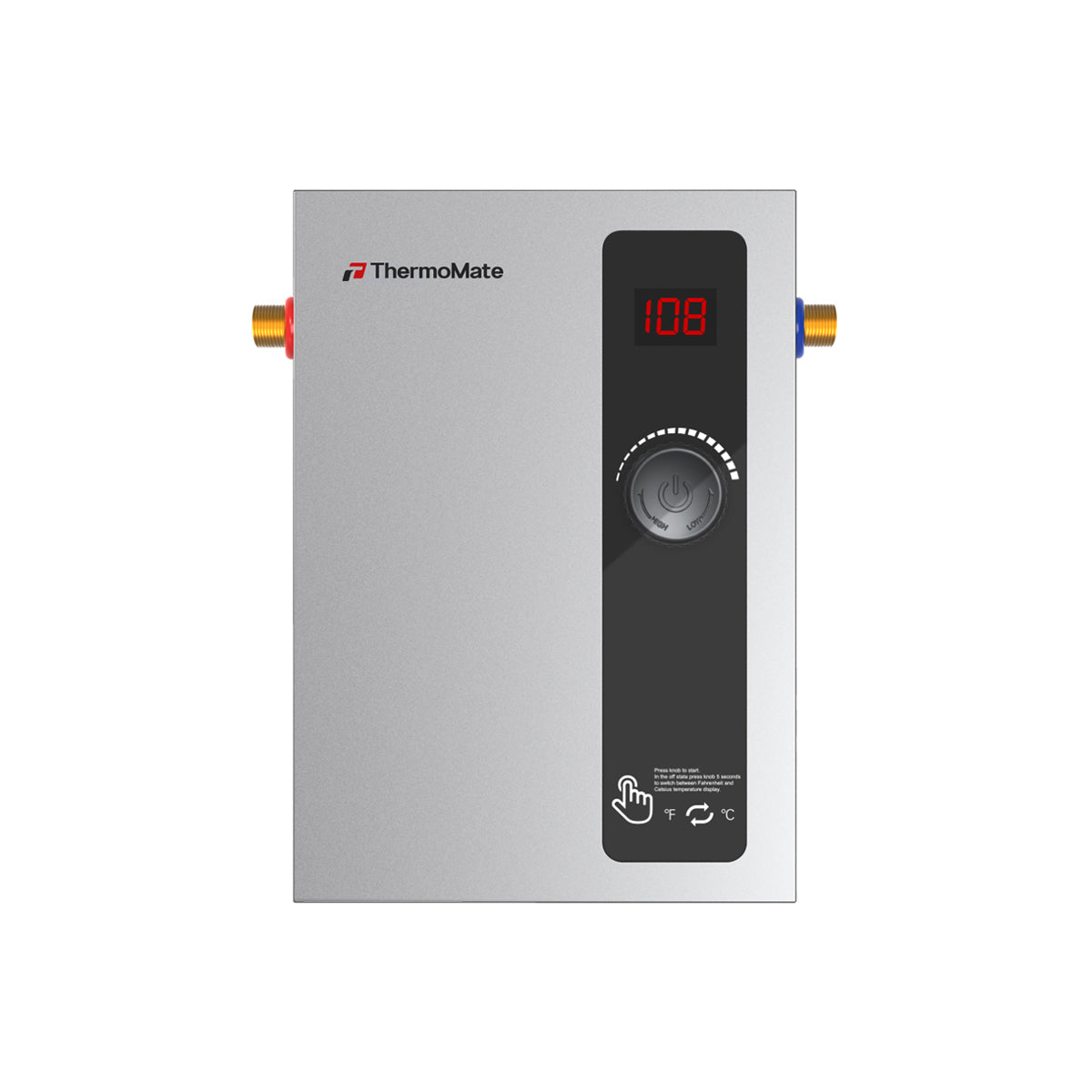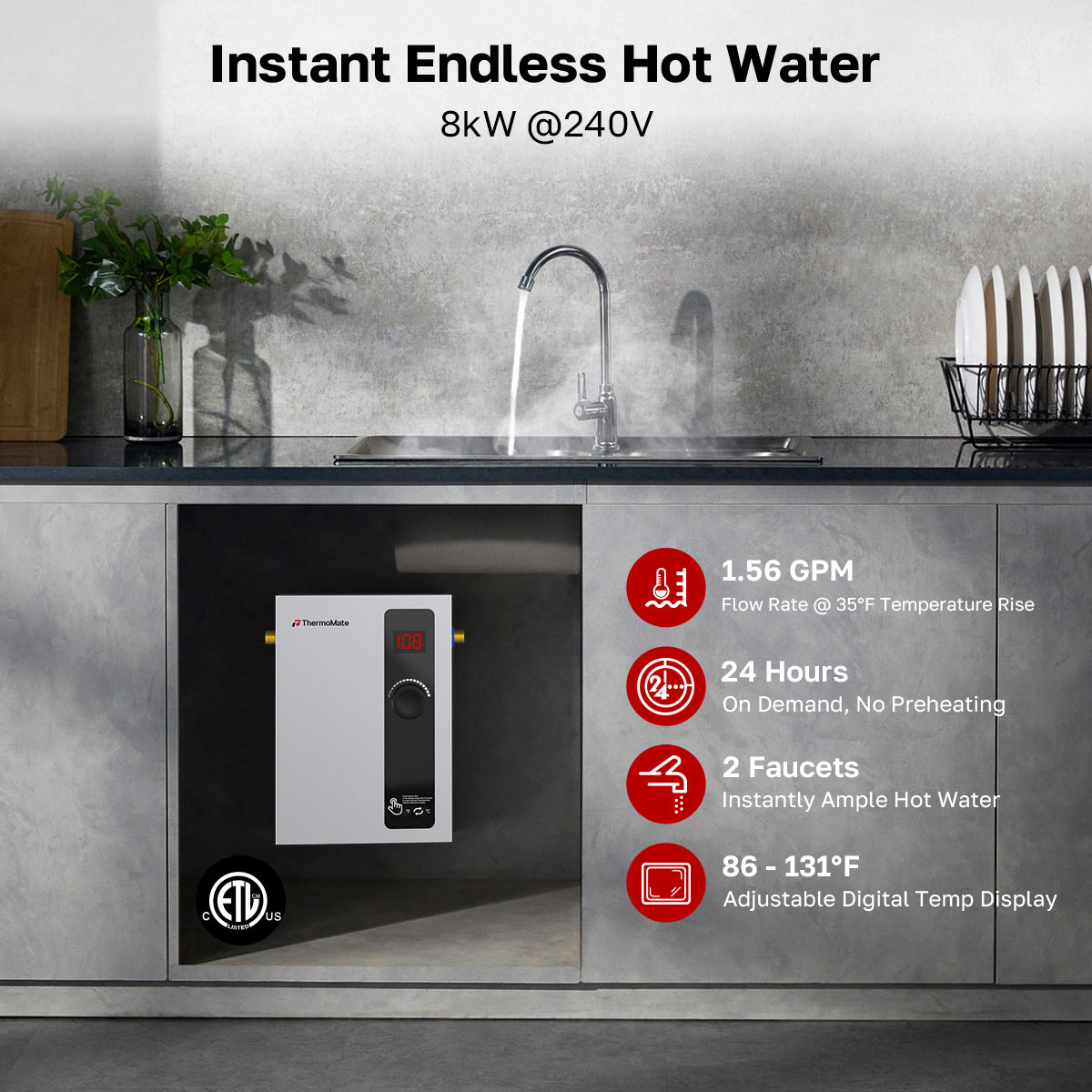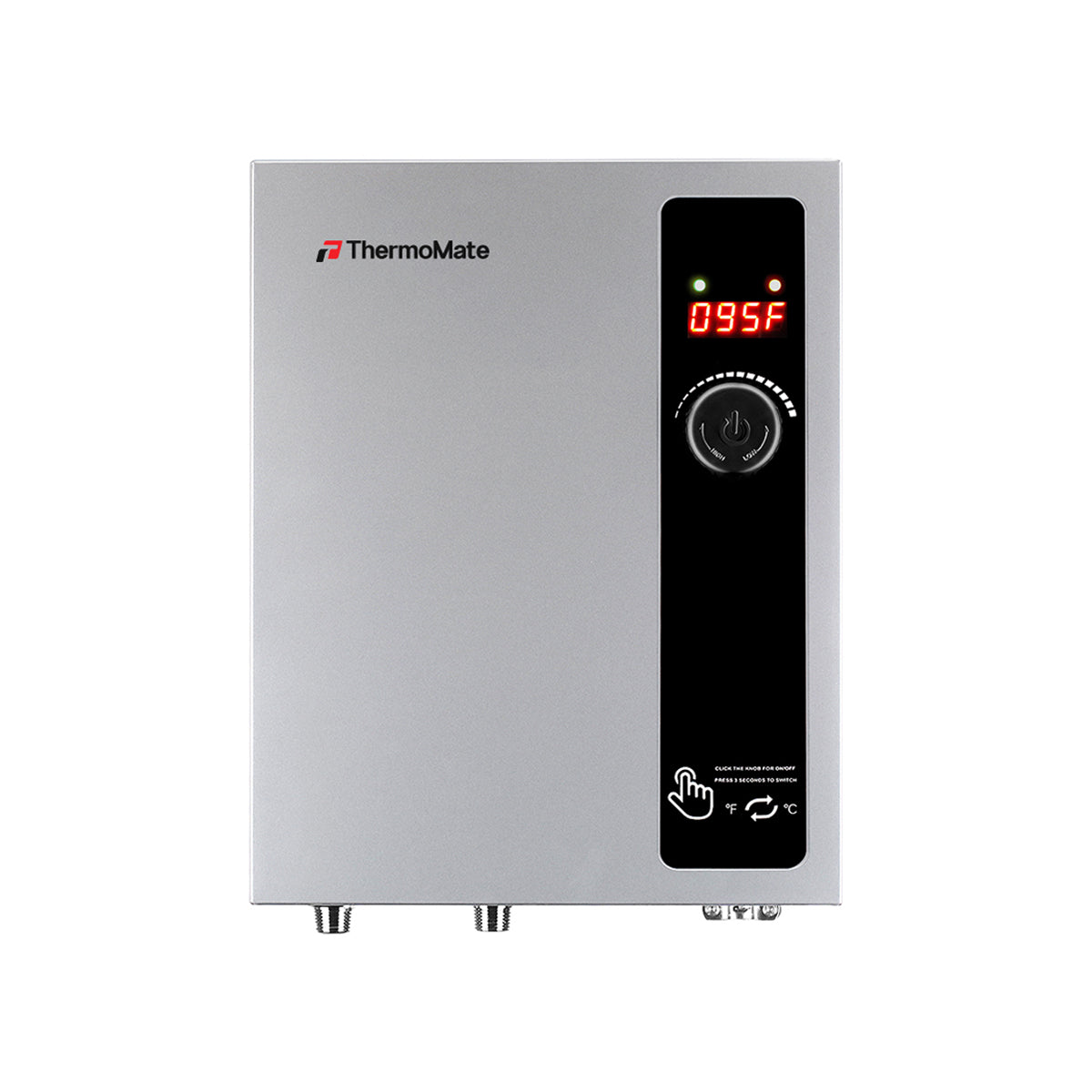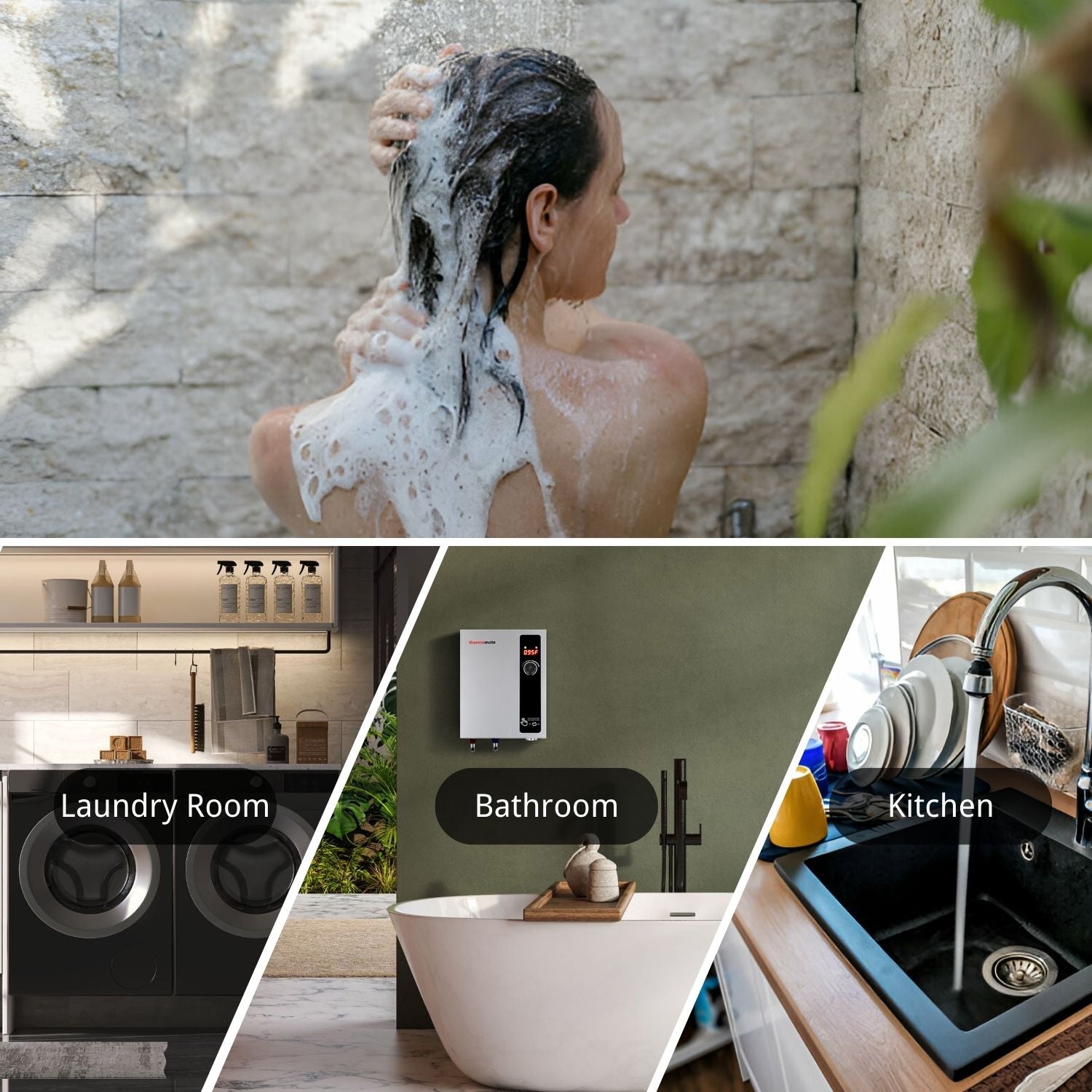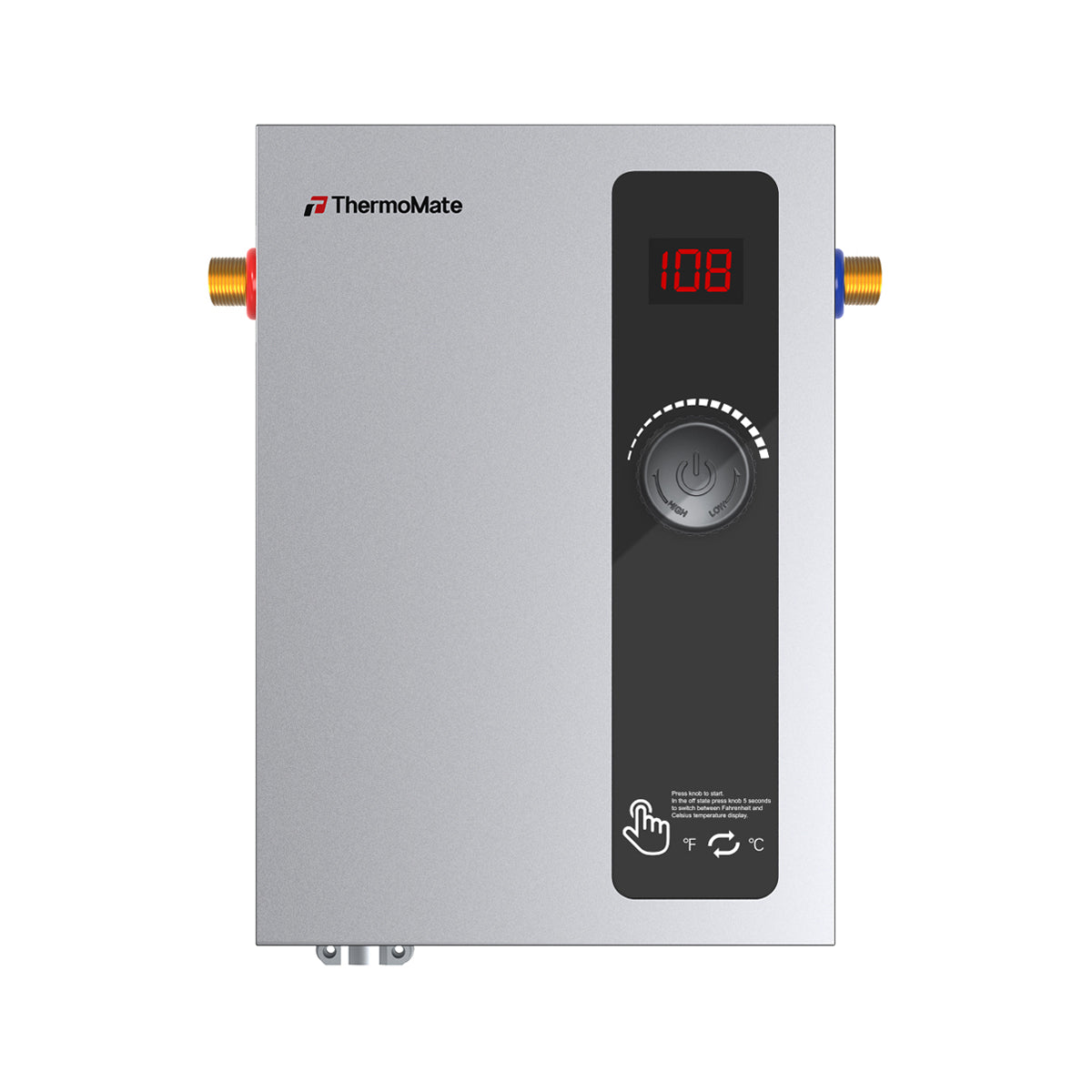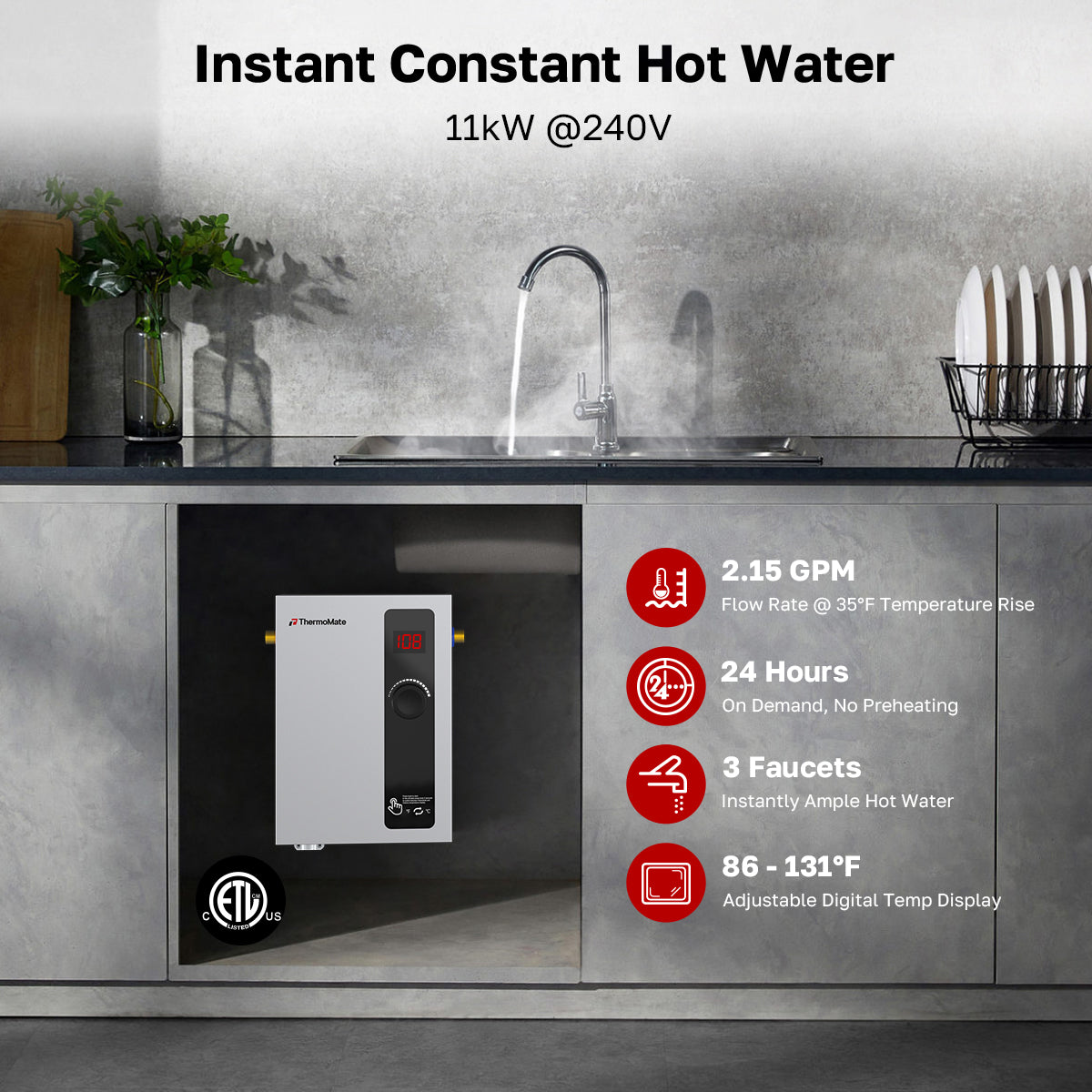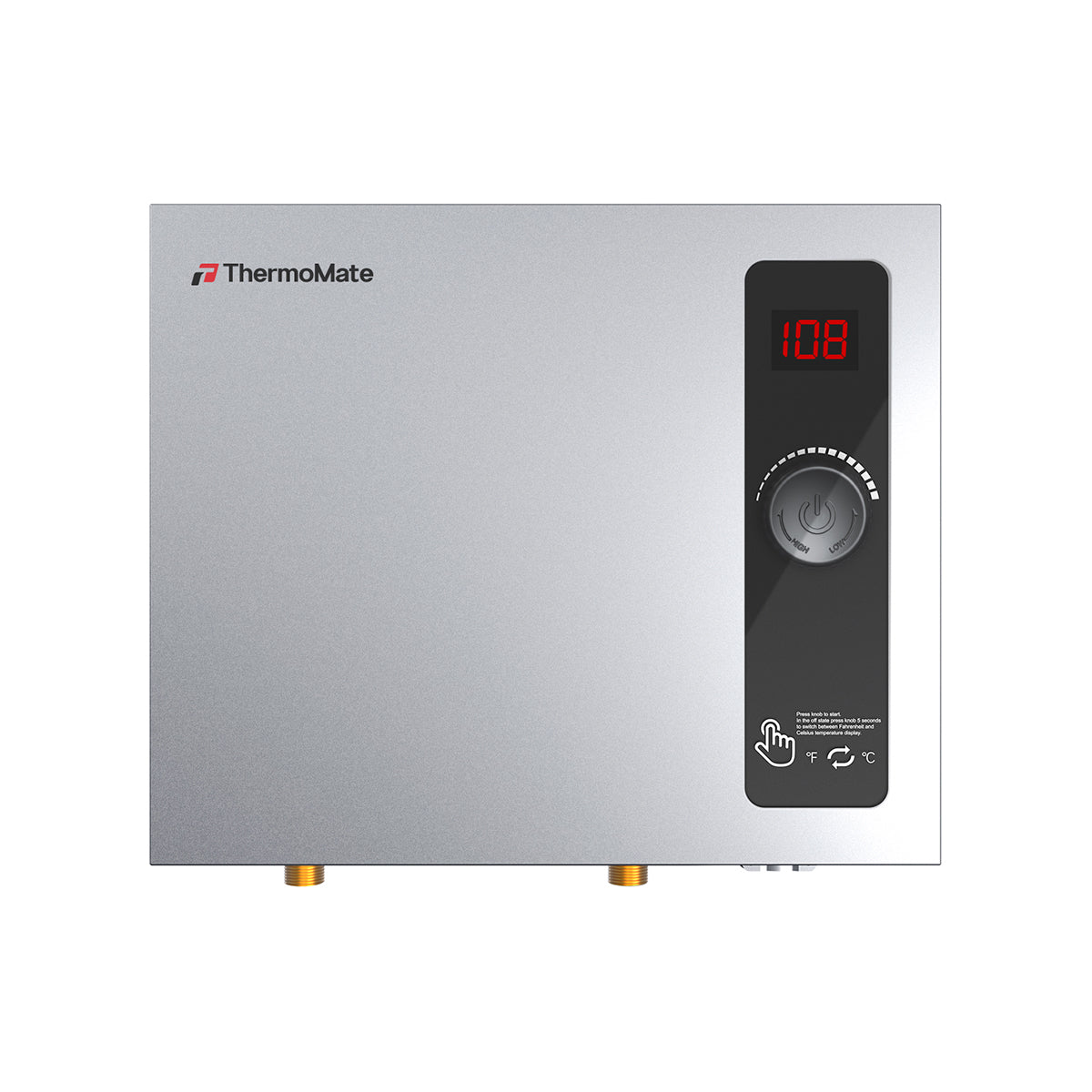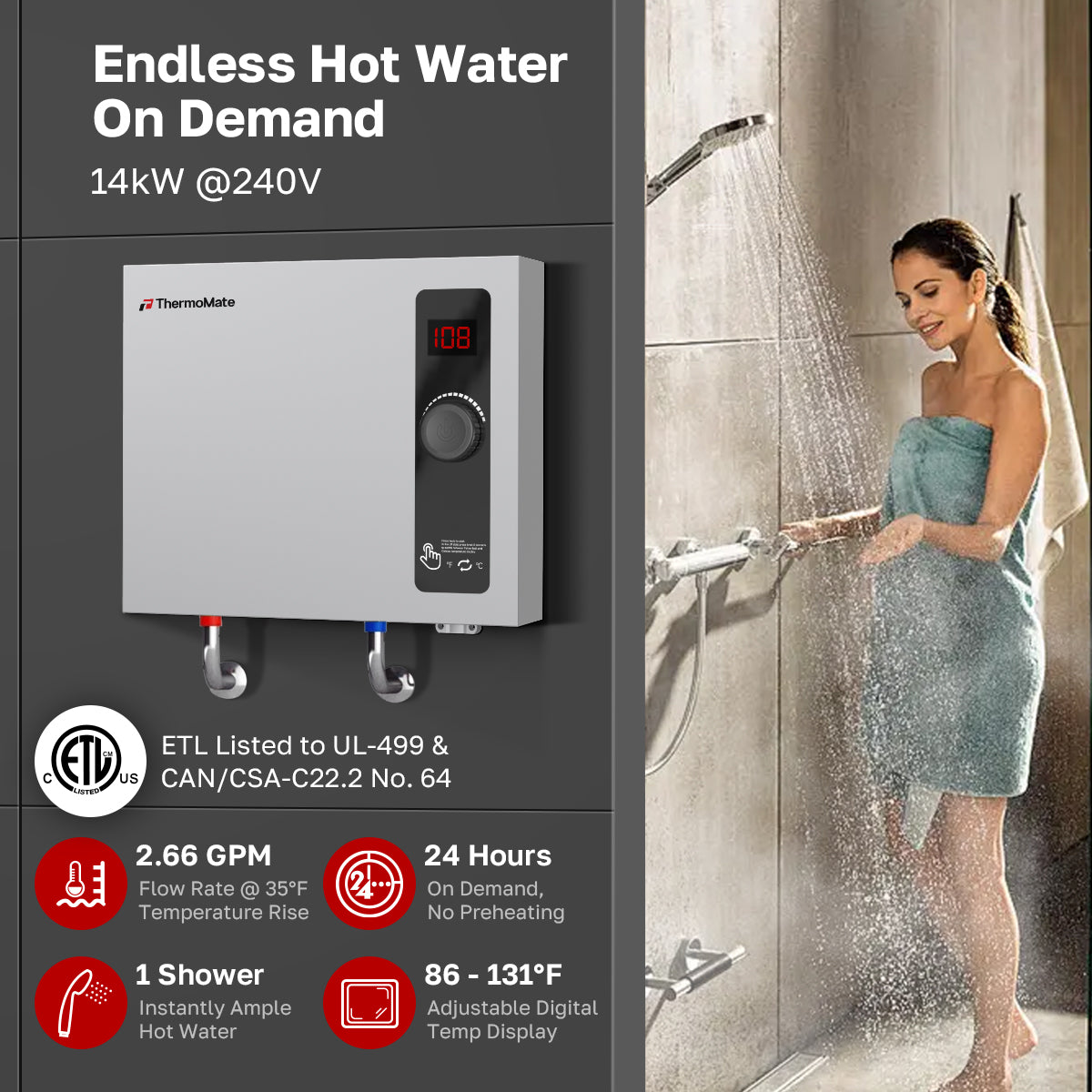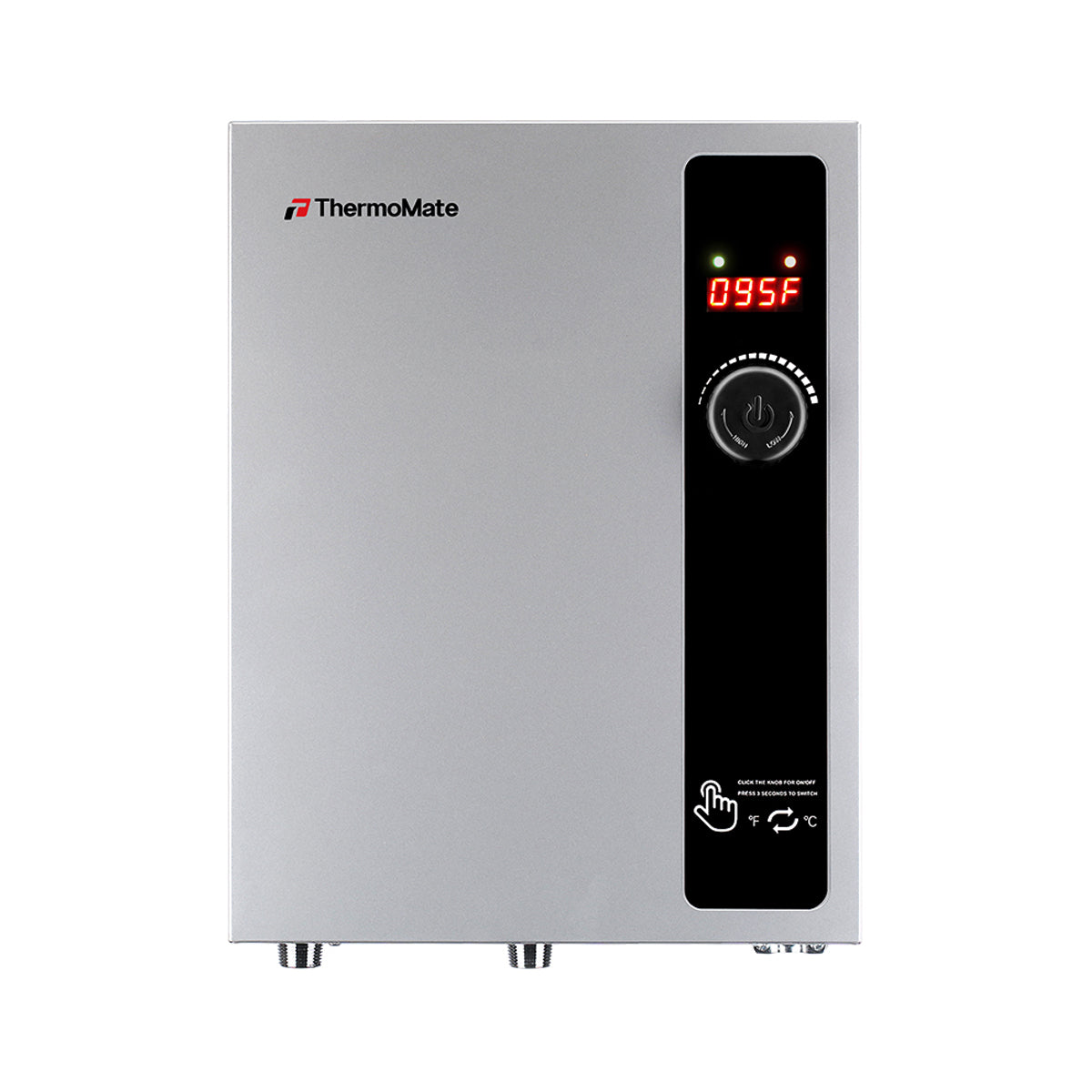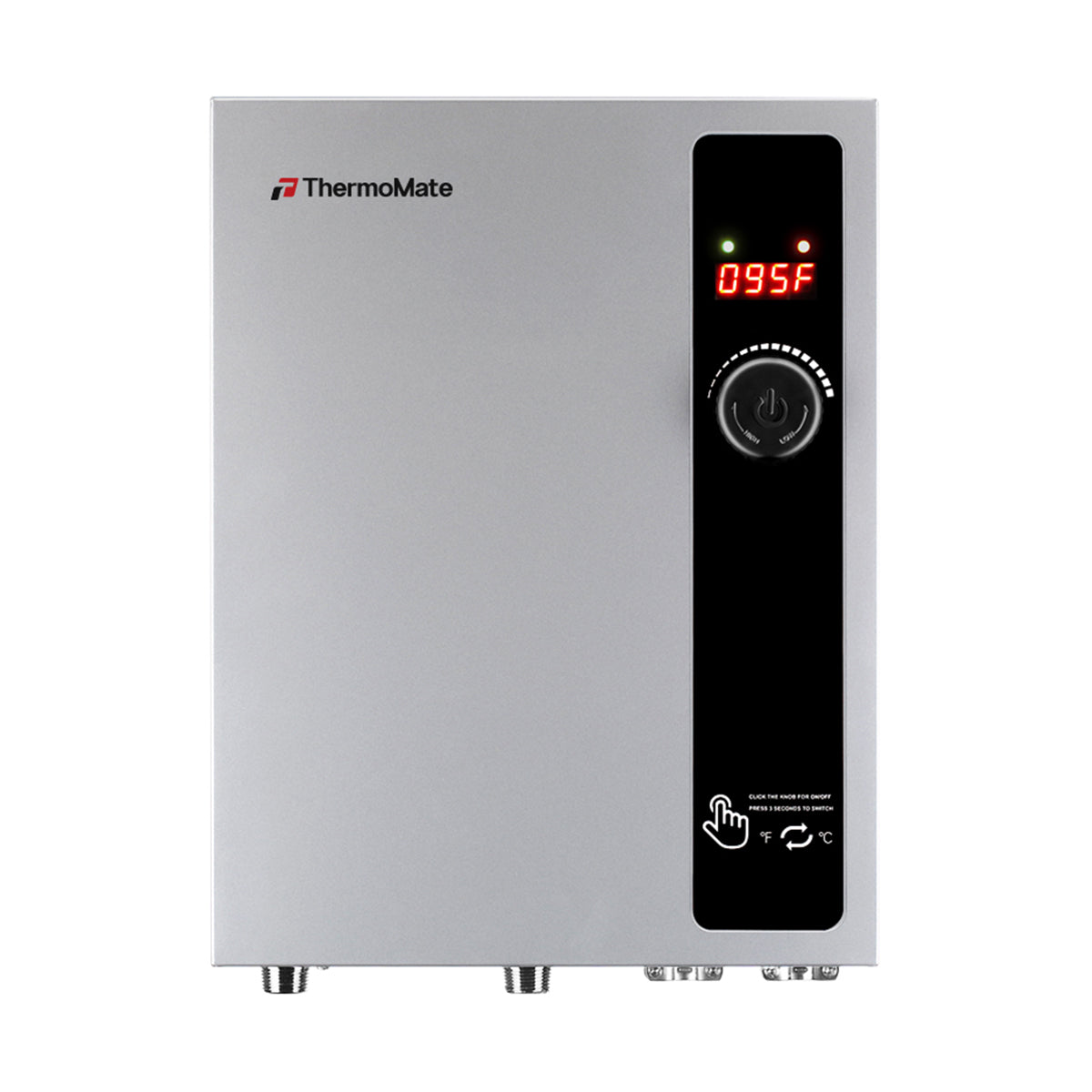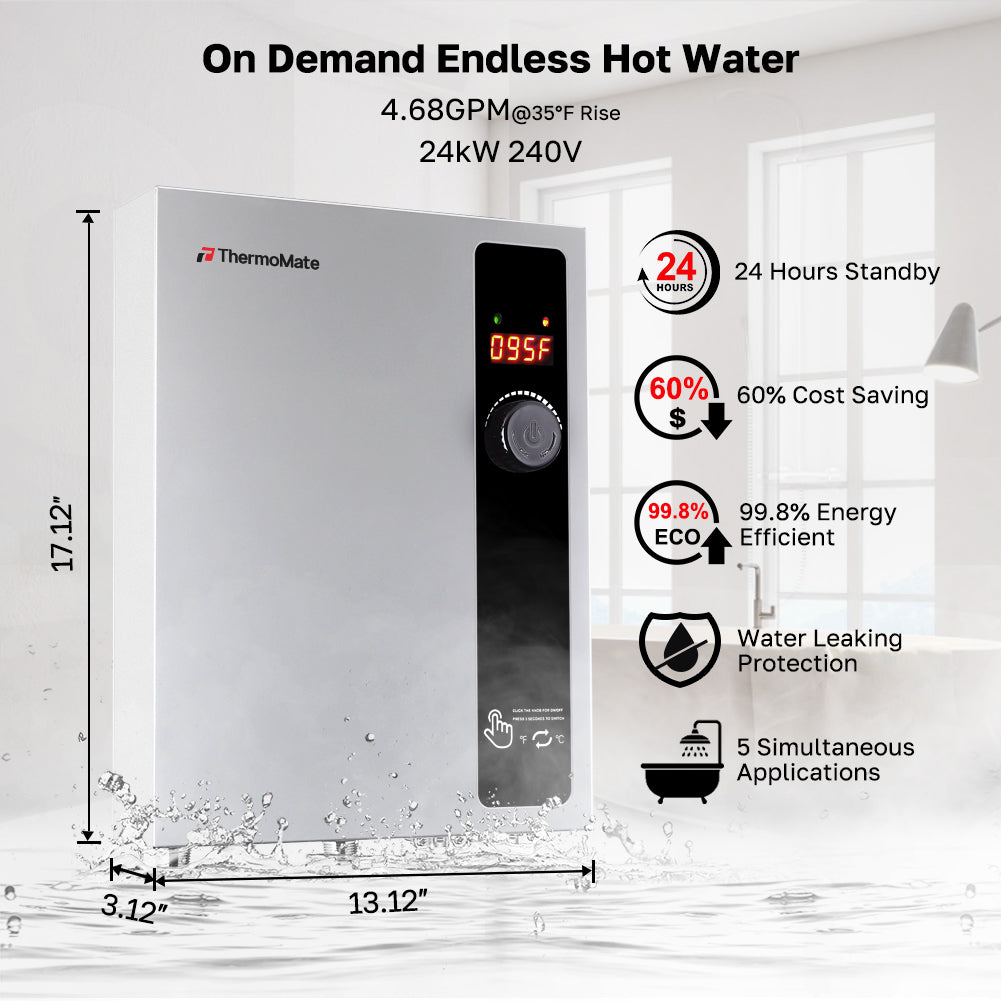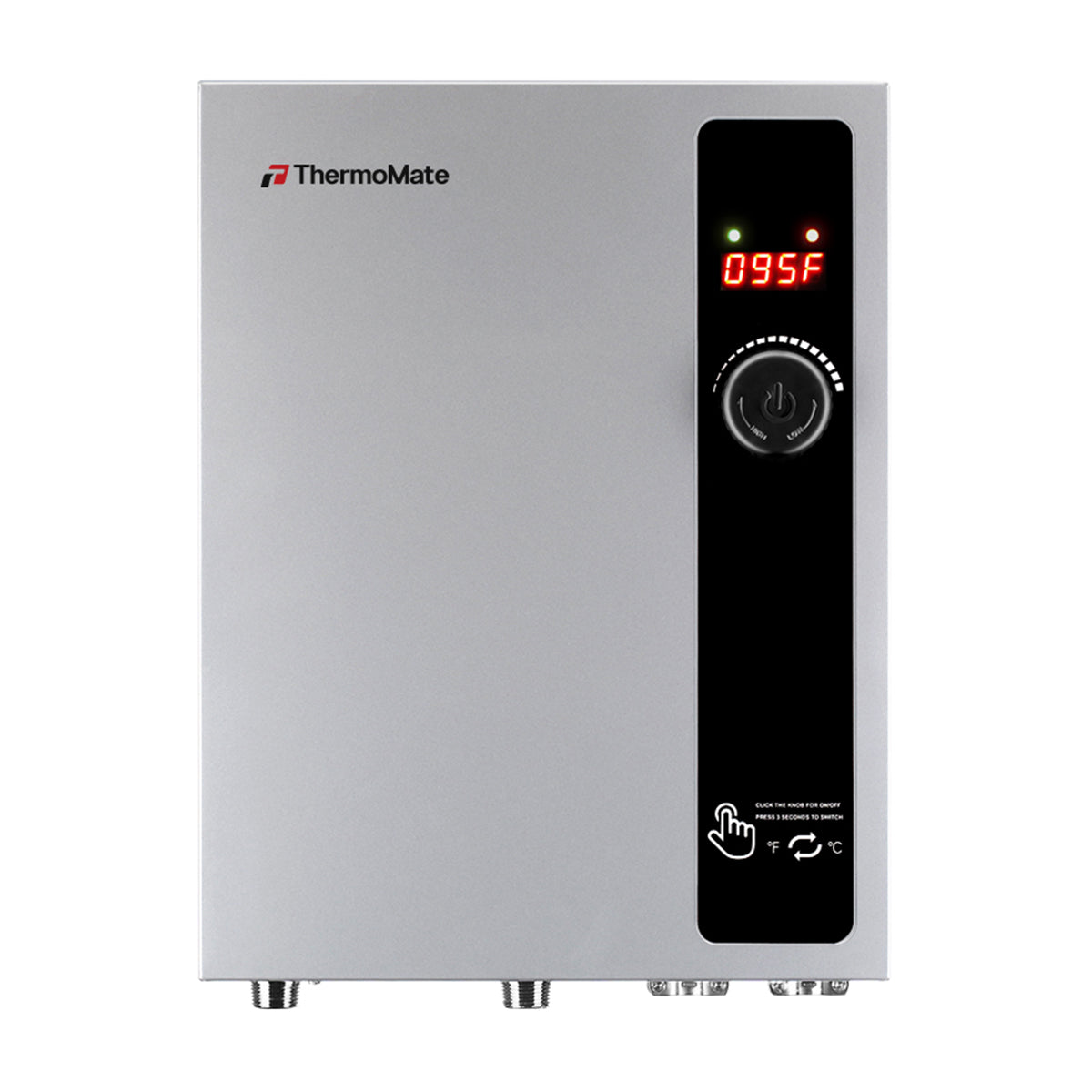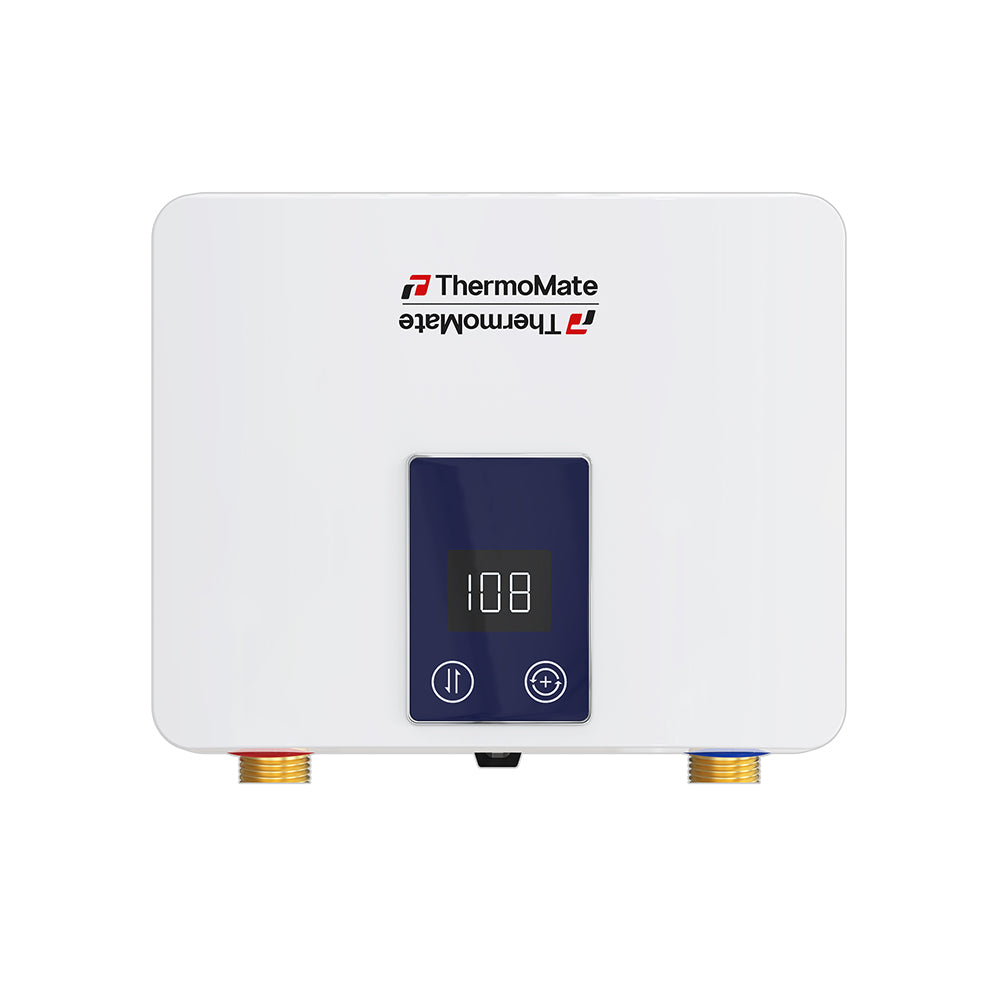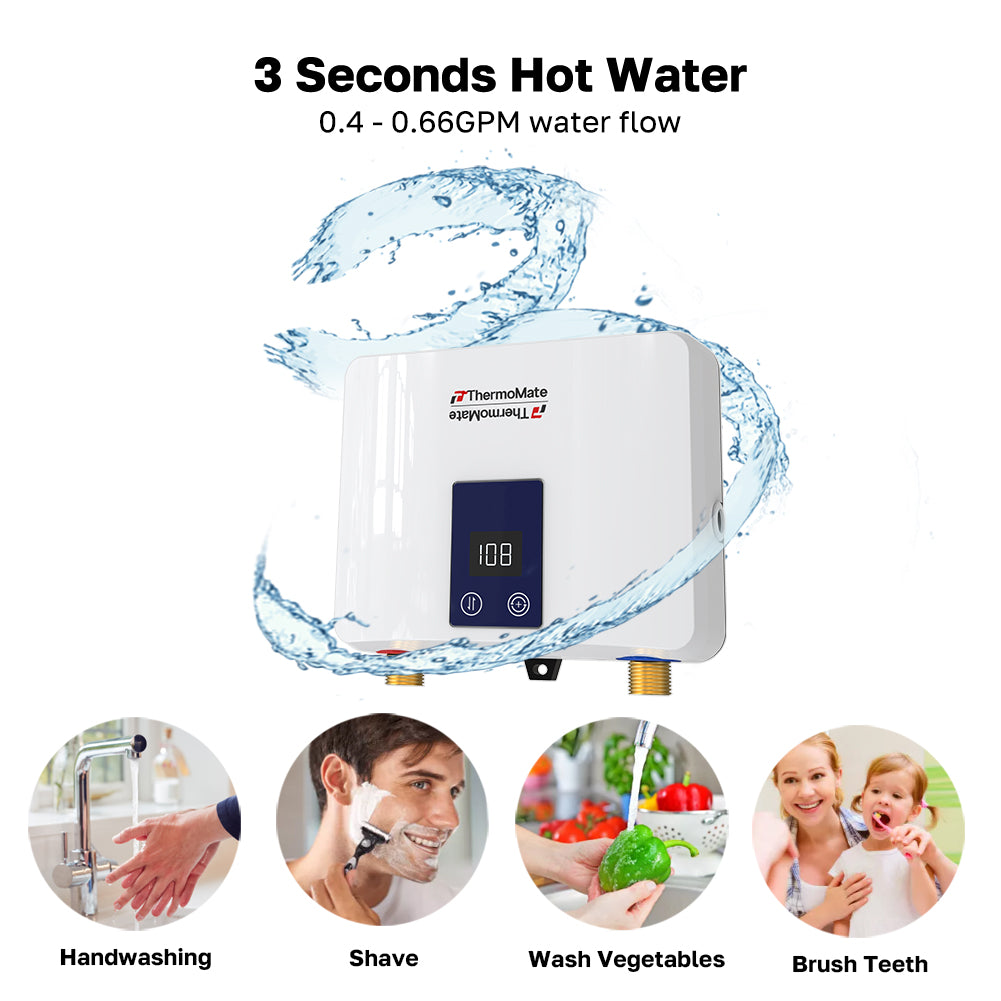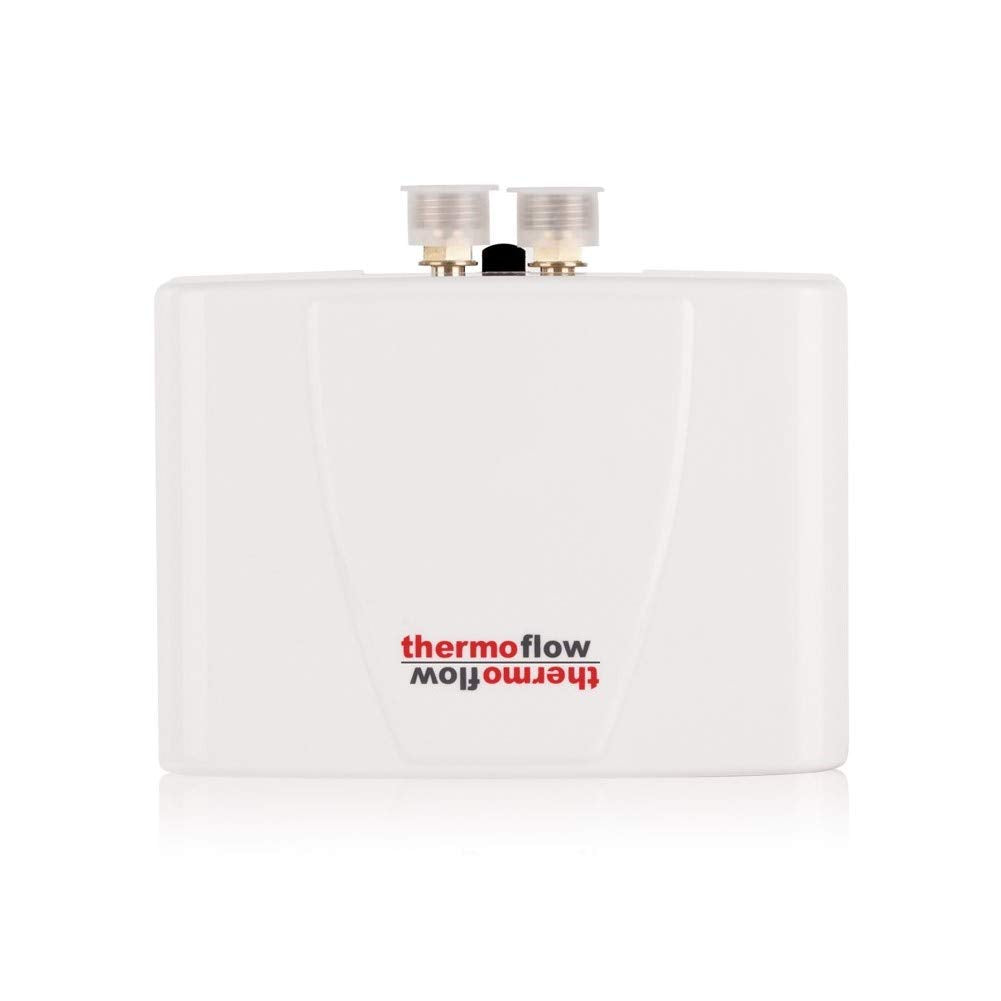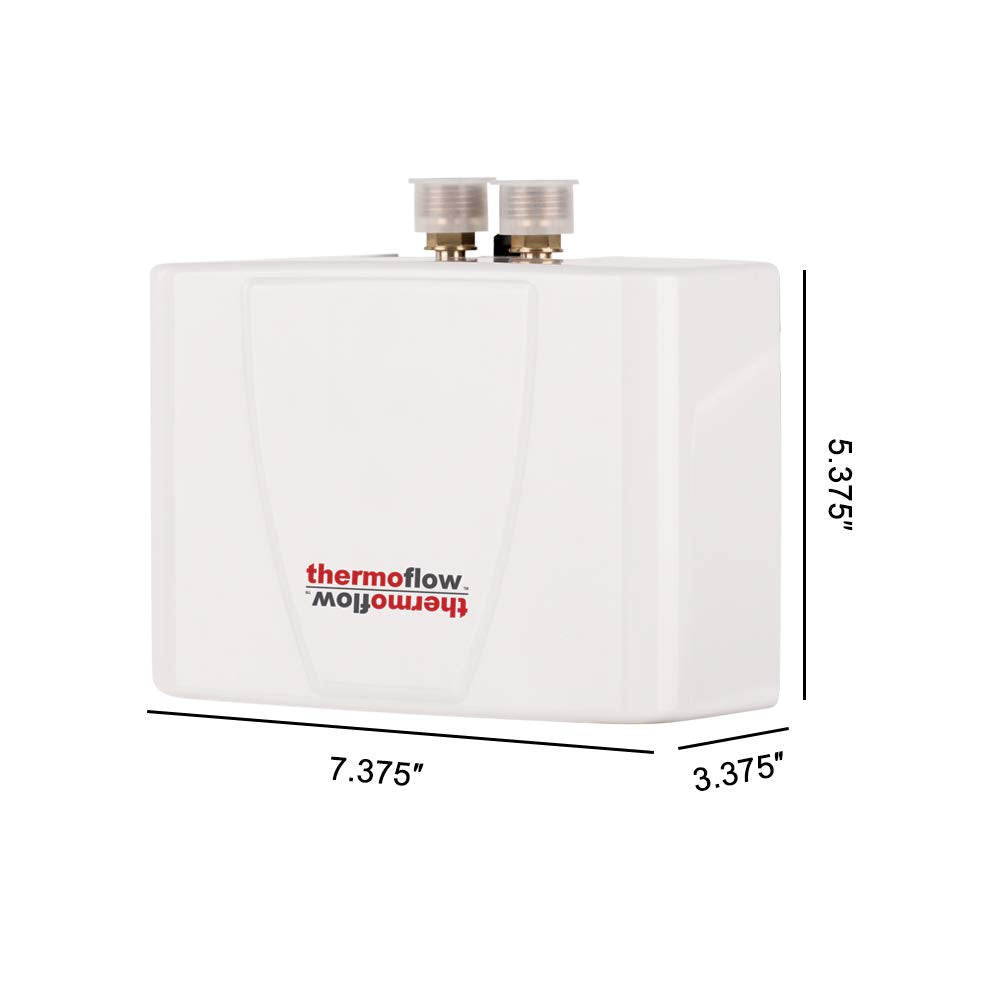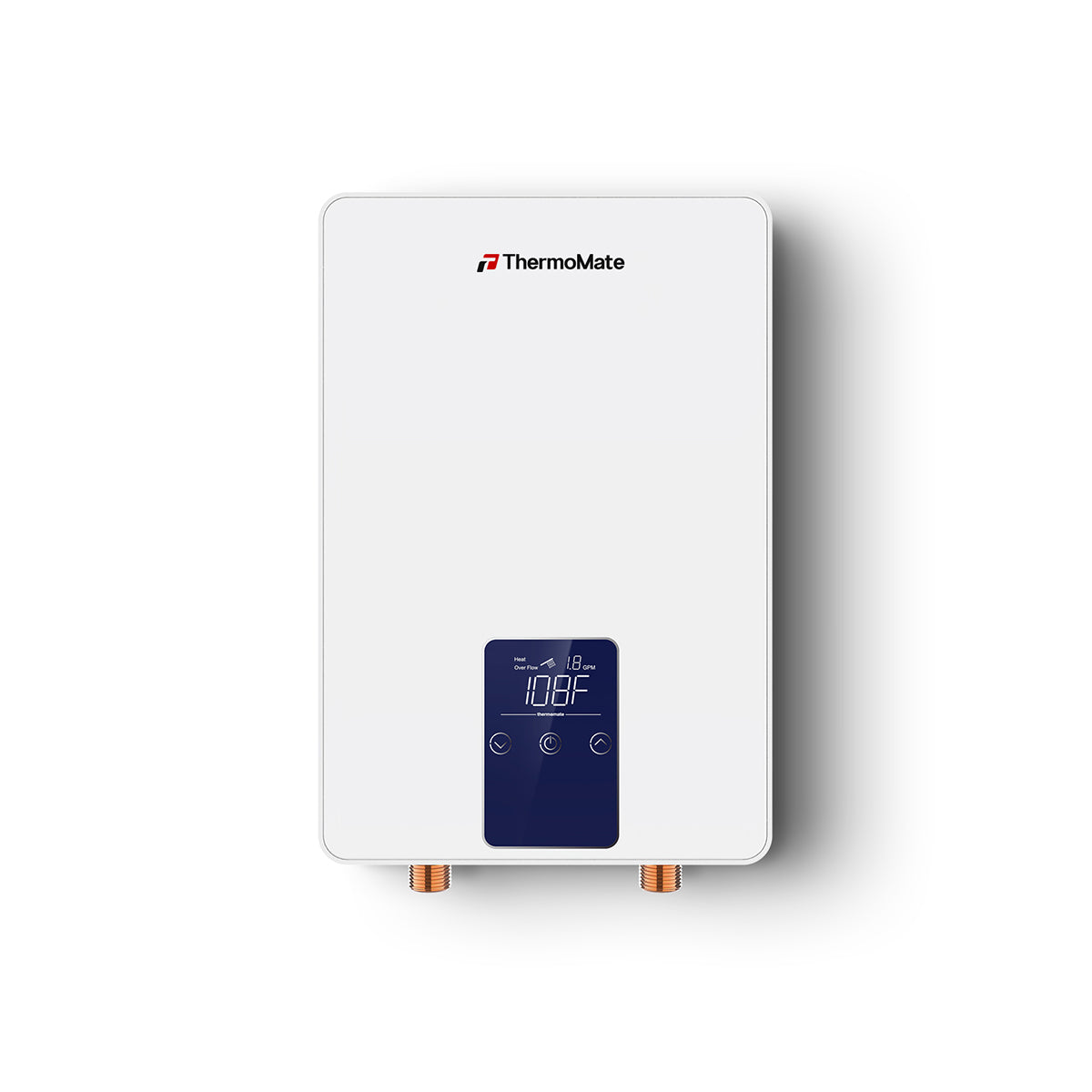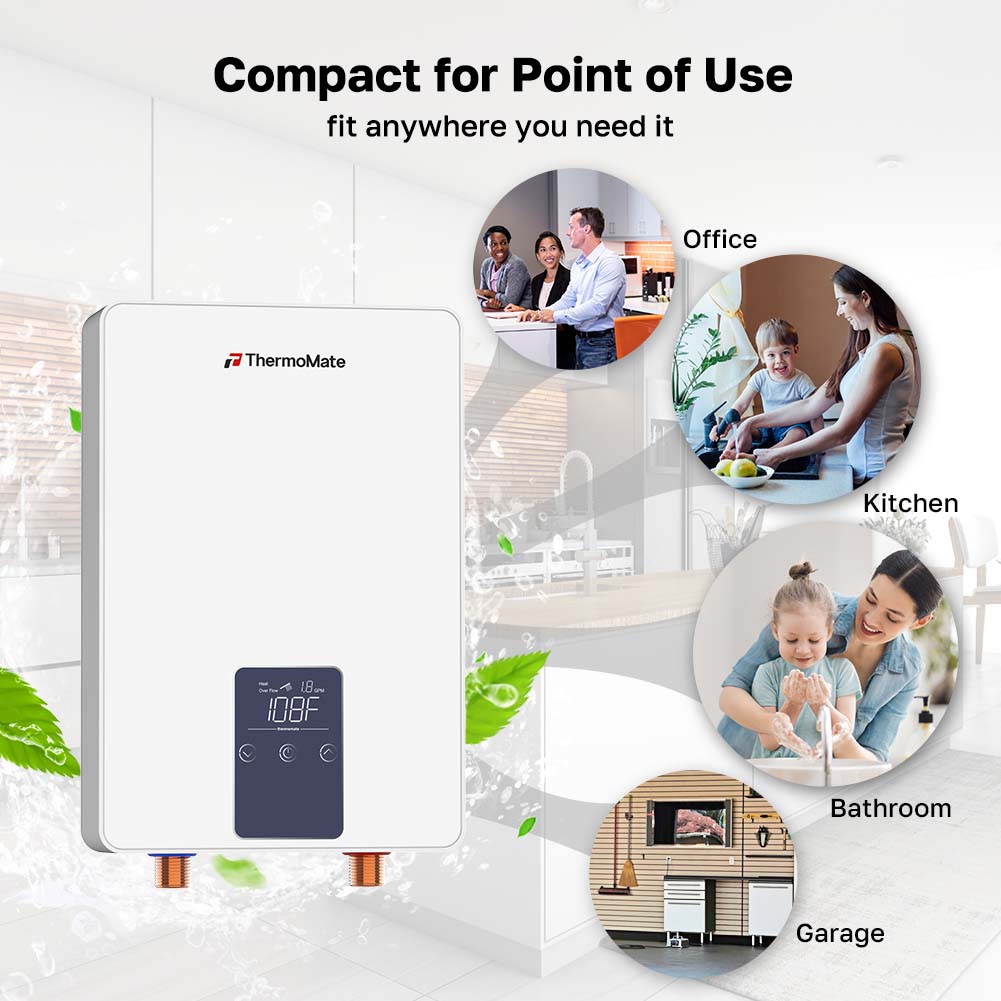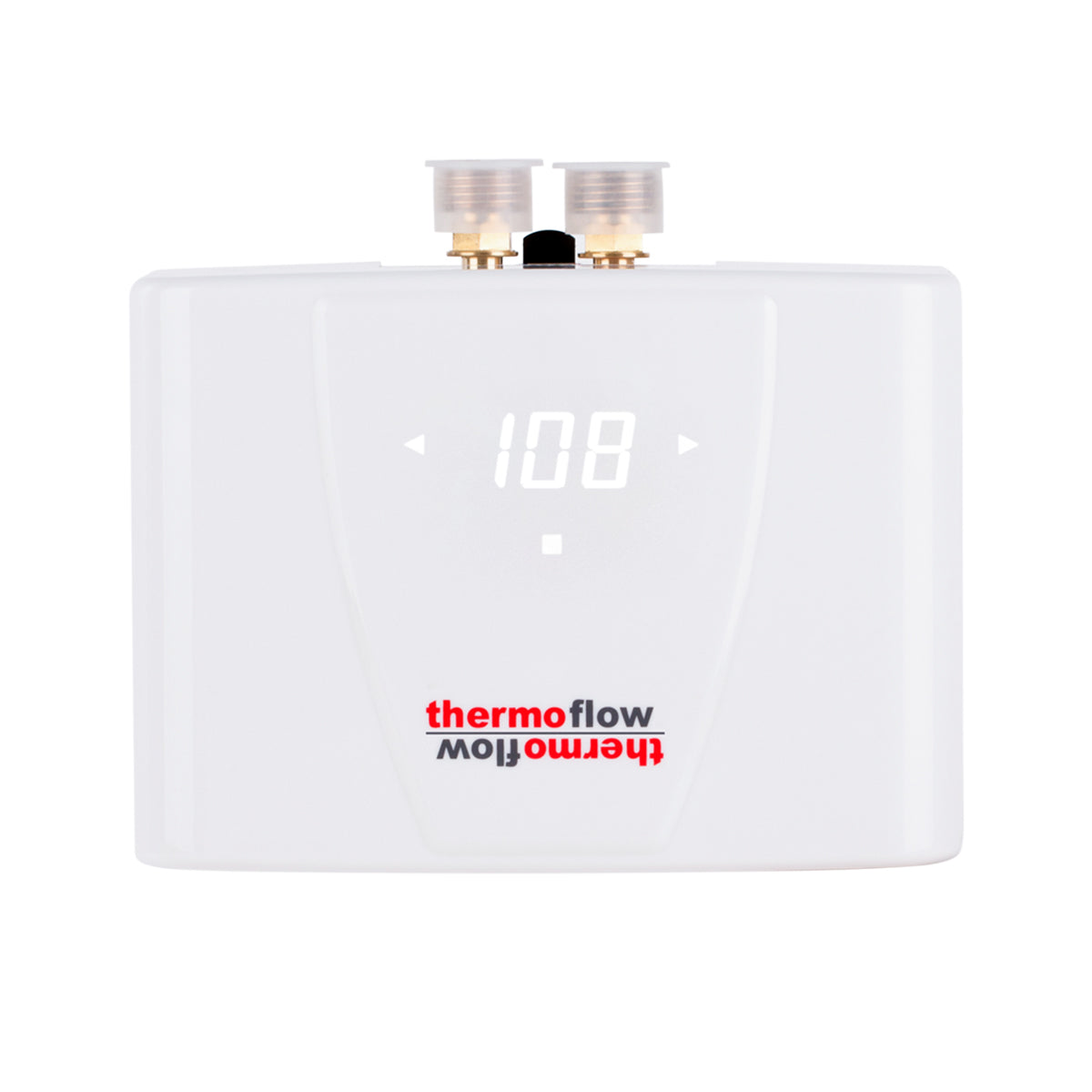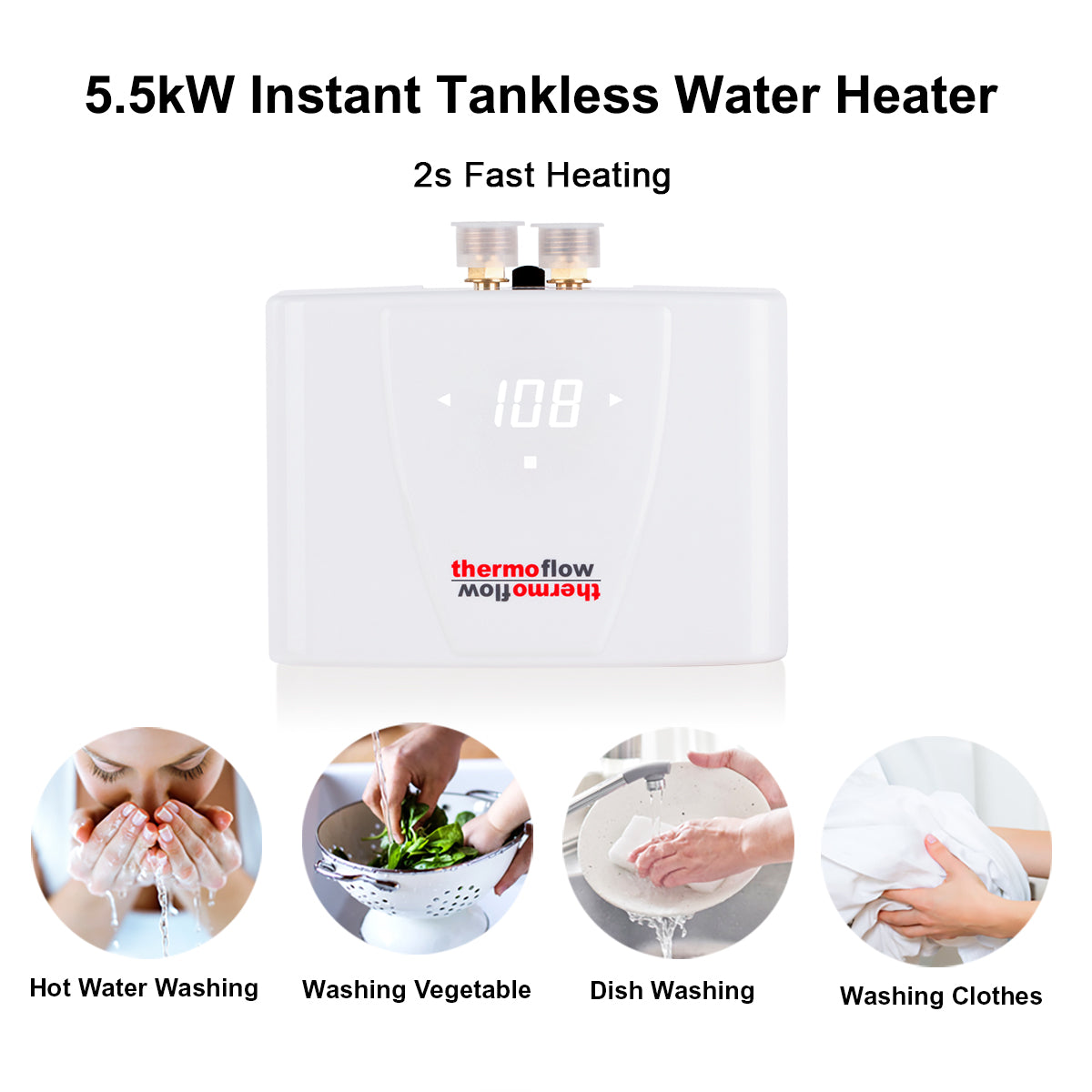-- When it comes to choosing a tankless water heater for your home, you have many styles and brands to choose from. Electric tankless models offer many benefits that gas tankless, or classic tank models cannot. Electric tankless water heaters can be installed virtually anywhere in your house that have the appropriate hookups (this is great if you have limited space in your home.) Some common places that our customers have installed their electric water heater are offices and bathrooms. They also offer cheaper installation costs because no venting is required. In most gas models additional venting parts and accessories must be purchased. Electric models are also safer for the environment because they do not vent out gasses into the environment.
-- Electric Water Heater Recomman

Pros of an Electric Tankless Water Heater
- Simple Installation – no venting required.
- Can be installed in most areas of the home.
- Variety of Sizes
When considering what size electric tankless water heater, consider the following factors: the temperature of the incoming ground water temperature, the flow rate required, and any breaker panel restrictions.
However, like any product, there are likely to be problems or issues that arise after installation. Many of these problems can be easily solved at home without calling a professional, even if you have limited knowledge about water heaters. Continue reading to learn about common electric tankless water heater problems that you can easily fix yourself! * Be sure you have adequate amperage that is required for the model you’ve chosen.
The first, and most important, step to any issue that you may be troubleshooting with your electric tankless water heater is to turn off the power. This is for safety purposes and can easily be done by turning off the fuse or the circuit breaker that the water heater is connected to.
Noises Coming from Your Water Heater
If you hear a rumbling noise coming from your electric tankless water heater this most likely indicates boiling water. This is a result of your water heater overheating because of sediment build-up.
If you hear a high pitching noise that can be described almost as whining, this can also be a result of sediment build up. When this high-pitched noise is heard that is the result of scale build-up on the heating elements.
To resolve both noise issues, all you must do is descale and flush out your tankless water heater. This needs to be done every six months to ensure that your tankless water heater is running as efficiently as possible.
Collection of Minerals
Hard water contains a large amount of minerals such as calcium and magnesium. These minerals slowly start to collect on the interior pipes and parts in your tankless water heater. If you encounter discolored warm water when you turn on the sink, this is a sign of minerals in your tankless water heater.
Once the sediment buildup becomes severe, you may notice the water exiting your sink is yellow or brown. An effective way to prevent plumbing problems caused by a mineral buildup in your water heater is to install a water softener in your house. This type of water treatment system is designed to remove magnesium and calcium particles from water before it is distributed to your tankless water heater.
Restricted Energy Supply
Another common problem that has an easy solution is if your water heater will not turn on because the energy supply is cut off. Your energy supply could have been cut off for a variety of reasons:

- Your circuit breaker has tripped.
- Your electrical system has a short circuit.
- The ignition system, such as the electrode, has malfunctioned.
Low Hot Water Capacity
Your tankless water heater is required to produce a large amount of hot water for daily tasks such as showering, cleaning the dishes, and washing clothes. The appliances in your house such as the dishwasher and washing machine utilize warm water to operate. A tankless water heater is engineered to provide a sufficient supply of warm water for various types of daily routines. If you are continuously running out of hot water while you shower or wash the dishes, this is a sign of an overloaded tankless water heater.
A water heater that is too small will not be able to produce enough hot water for more than 1 or 2 hot water applications. When a water heater deactivates, the easiest way to fix the problem is to reset the unit. To prevent the water heater from shutting down, you will need to limit the total number of simultaneous hot water applications.
For example, do not perform a load of laundry while you are showering in the morning. If you are not able to limit your hot water usage, you will need to purchase a new tankless water heater with a higher capacity. On the other hand, it may be beneficial to purchase a second tankless water heater to provide warm water to your appliances and fixtures.


